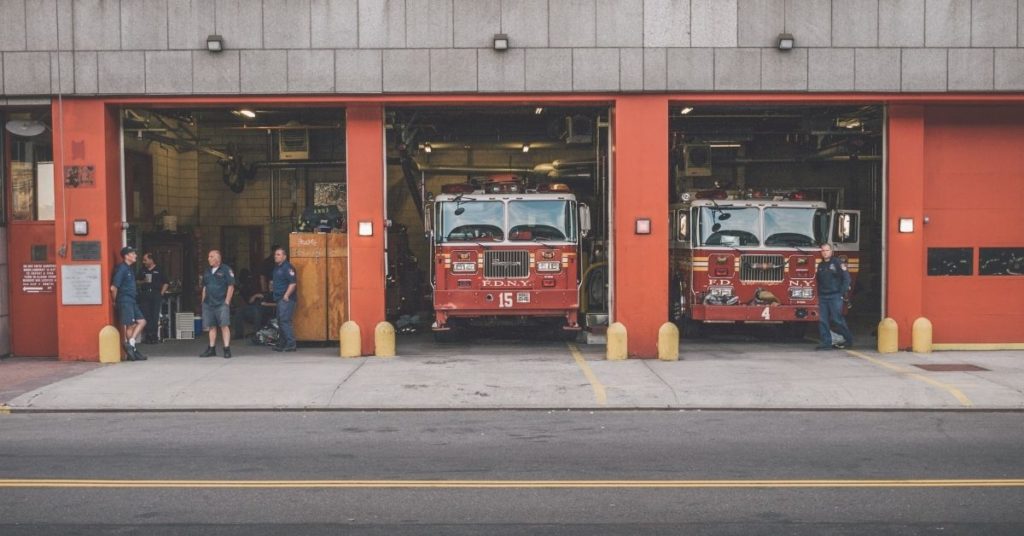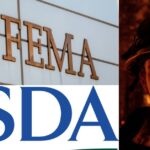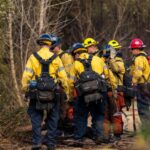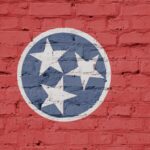Earlier this summer, Firefighters & EMS Fund compiled the second edition of its Fire Referendum Report. This report took a look at dozens of ballot questions and referendums from around the country which directly affected the nation’s fire departments and emergency services.
These ballot questions primarily asked residents from states and counties to approve additional funding measures to bolster fire and emergency services for a variety of reasons. America’s fire and emergency service providers have struggled for years to maintain operations, update safety apparatuses, expand fire stations, and perhaps most importantly, properly staff their departments.
Maintaining and expanding staffing is a crucial issue for America’s fire services, and lack of adequate funding is often the primary obstacle in making sure enough firefighters are on the job to provide timely and effective service to their communities. Of the dozens of ballot measures studied for this year’s 2020 Referendum Report, ballot questions dealing with increased funding for staffing found considerable success. As we noted in this year’s report, six of the studied referendums dealt with increased funding for staffing, five of them passed.
While Covid-19 exacerbated both funding and staffing issues in fire departments across America, this issue has been a plague on fire departments for years. Below are six additional ballot measures related to staffing spanning from 2017 to 2020 and what happens when citizens are voting for firefighters:
Ankeny, Iowa
By the year 2017, Ankeny, Iowa was the third fastest growing city in the United States, whose population had doubled over a 15-year time period. This naturally had a significant impact on the fire services of the city. According to literature prepared by the city at the time, calls to the station increased by 50% in the city since 2019, and while response times within the city were typically within 5 minutes, service to the outlying Otter Creek periphery was nearly double.
So, in 2017, the city called a special election which included a ballot measure on raising $2.55m through bond proceeds to build a third fire station. The bond measure would not raise local taxes but authorized the city to borrow the funds necessary to complete the project. The measure passed with 86% approval and a third station was built.
Brewster, Ohio
The Village of Brewster, located in the state of Ohio, has a population of 2,112 according to the 2010 census. A 2018 profile on the department written by Indie Online, showcased the unsafe conditions firefighters of Brewster Village were working in, noting “Diesel exhaust from the engines can waft into the kitchen as firefighters prepare lunch during a 12-hour shift. Exhaust also reaches their turnout gear as it hangs on wire racks in the back of the bay.” The department would go on to seek an increased tax levy from the residents of the village which would go to expanding the fire station, which lacked even showers for the firefighters on duty. The levy which would “provide for the temporary increase in the tax levied on income from one-and one-half percent (1 1/2%) to two percent (2%) for a period of eight years beginning on January 1, 2020.” Half of one percent would go towards additional funding for the fire department, to expand the station and increase staffing to provide 24-hour service. This ballot measure was successfully passed in 2018.
Delafield, Wisconsin
In the 2020 national elections the residents of Delafield were asked to vote on a tax increase which would have raised funding to maintain operations for their fire and other public safety services, such as policing. The levy would equal an increase “of 4.011%, which results in a levy of $6,680,713, and include the increase of $257,608 for fiscal years 2022 through 2025.”
In its presentation of the measure, the town wrote that “without voter approval to exceed the levy limit, the City may likely not be in a position to support the Lake Country Fire & Rescue (LCFR) operational plan to transition current part-time staffing to full-time staffing.” The town noted that while it is serving far more people than it did 10 years ago, the budgetary constraints meant that its staffing levels in these critical services were basically unchanged. In addition, relying on part time volunteer and on-call paid firefighters was becoming increasingly tenuous and difficult to maintain. Despite these realities, residents ultimately rejected the increase in municipal taxes by a total of 58% against.
Greenfield, Wisconsin
Ahead of the 2018 elections, the Greenfield Common Council unanimously approved a ballot measure which would ask residents to allocate an additional $975,000 to hire additional fire and police personnel. The ballot question asked residents to allow the city to exceed state-imposed levy limits to obtain the funding. The referendum passed and the department ultimately decided to use the money to fund fire adjacent personnel to respond to medical calls. According to CBS 58 in Wisconsin, the money was used “…toward hiring a training officer and a social worker partly to try and cut down on sending emergency services to people who don’t need them.”
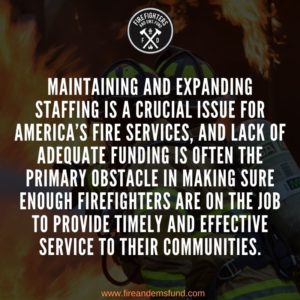
Kenosha, Wisconsin
We have been really trying to do more with less for over 20 years.” That’s what Fire Chief Charles Leipzig of Kenosha, Wisconsin had to say following a referendum in his town asking residents to increase local taxes in 2018. Like so many fire departments around America, Leipzig was forced to work with few resources and funding which seemed to be worth less by the year. Residents of Kenosha were asked in 2018 to raise tax levies “…on an ongoing basis, for maintaining five additional police officers and two additional firefighters with associated equipment, by a total of 1.73%.” The referendum ultimately passed, allocating approximately $900,000 to hire additional emergency service personnel.
Limestone Township, Illinois
Back in 2019, officials with the Limestone Township Fire Protection District realized they had a big problem. Their service was severely understaffed. At the time, Fire Chief Mike Whalen noted that “No fire chief wants to admit to having a staffing problem. It’s embarrassing,” but continuously manning his crews with three men instead of the four typically required to man a truck meant that more funding was desperately needed, “or we have to cut services.” At the beginning of 2020, the county brought the issue to the ballot, where citizens were asked to allow an increase in property taxes to further fund the fire services. That ballot measure lost. The county didn’t give up, however, and brought it back to the ballots in the November general elections. The townships affected “were asking voters in their respective districts to allow them to increase tax rates for the next two years. After the two years, the tax rates will revert back to their current rate.” Limestone asked for a 66% increase in property taxes, voters rejected that by a margin of 1,681 to 1,488. Services as a result have been suspended on weekends there.
A random sampling of ballot measures asking to increase funding for fire department staffing over spanning from 2017 until 2020 provides further insight into the general trend noticed in the larger study of 2020 ballot measures. That is, ballot referendums seeking to secure funding for staff appear to be generally popular. In this random examination, four of the six measures passed. This equals a success rate of 66%. While this is lower than the outcomes of 2020 alone, it does capture the success rates of any of the given years individually, and highlights voters’ general willingness to staff their departments.
Success in Ballot Measures
Of note in an analysis of these referendums is that both ballot measures defeated on the list were defeated during the November general elections of their respective years. While our analysis of 2020 at large showed that ballot measures voting for firefighters had similar success during and before the general national elections, historically we have found that ballot measures often have higher success during primary season and special elections, where turnout is not as politically charged by party politics.
Of note as well is that the two ballot measures which failed on this list, Delafield, Wisconsin in 2020 and Limestone Township in 2020, asked for significantly higher tax increases than the 4 measures listed here who passed. Delafield, Wisconsin, for instance, had the lowest tax rates in its county, but voters were suddenly asked to raise their property taxes by over half. This would be a failing proposition in most American towns. Limestone asked for a far more moderate increase at 4% but was still considerably higher than the other referendums listed.
Ultimately, the referendums which were successful here successfully communicated the need for additional staffing in their respective fire departments and made clear what was on the line if the measures were to fail.
In all cases, voters were more willing to accept a modest increase in taxes in exchange for bolstered fire services. Better yet, as in the case of Ankeny, Iowa, over 80% of voters were willing to approve millions of dollars in increased funding when their taxes were not affected at all.
While there isn’t a perfect equation for getting a referendum to pass, when it comes to increased staffing for fire departments these randomized samples appear to demonstrate that voters understand the benefits of staffing their departments beyond the bare minimums seen in much of the country. But in the end, they are not willing to pass measures which appear to create excessive financial burdens on themselves in exchange for these benefits.
Image Credit: Photo by Tomas Eidsvold on Unsplash
The 2018 Fire Referendum Report was created to better understand and support measures in the United States which affected the operations of emergency services. We focused on local and state referendum and ballot measures so that we may be better prepared to assist the political efforts of firefighters in America. Now, the report is back. We are excited to announce the release of the “2020 Fire Referendum Report”.

